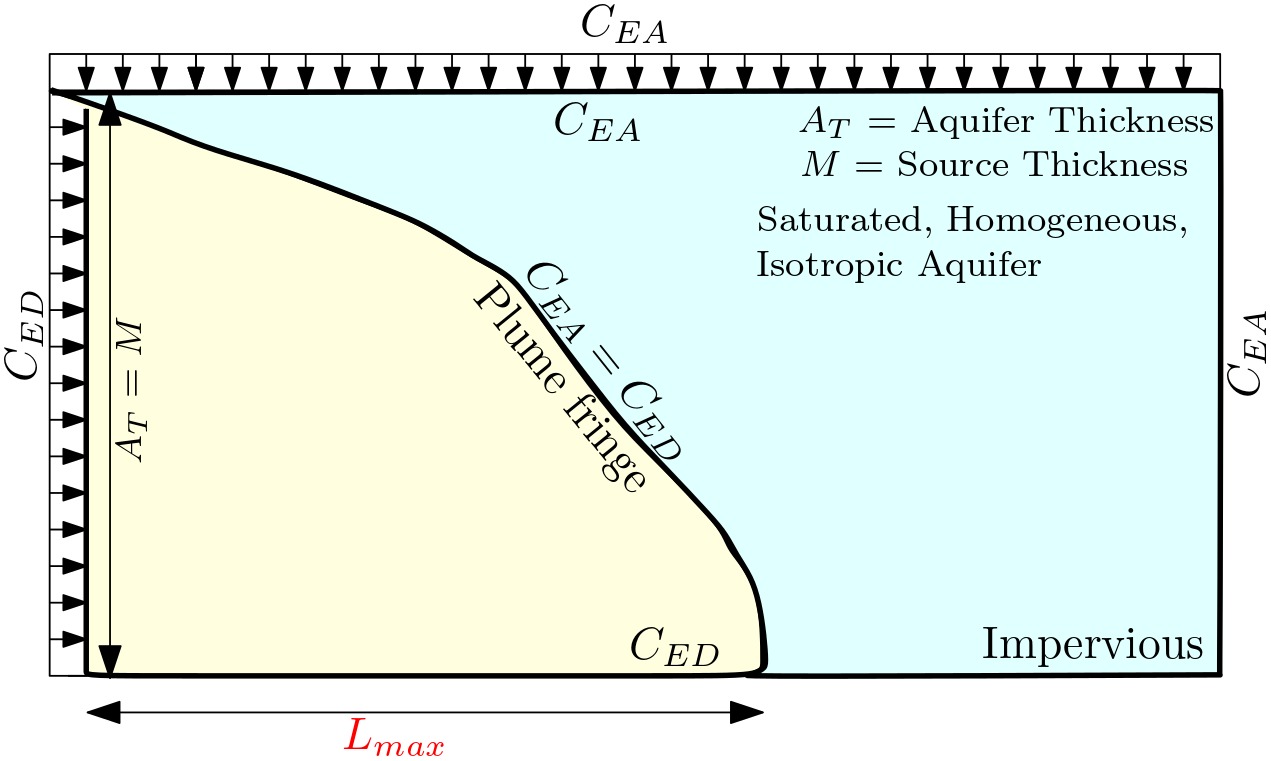Numerical Model - 2D reactive transport model using MODFLOW and MT3DMS
The numerical model in the CAST is based on the conceptual work presented in Yadav et al. (2014). The 2D numerical domain is vertically orineted and follows the assumptions similar to that provided in Liedl et al., (2005,), e.g., homogeneous, isotropic, steady-state and bi-component (Electron Donor or contaminant concentation \(C_{ED}\) and Electron Acceptor or the partner reactant concentration \(C_{EA}\) ) instantaneous reaction (see Liedl et al., 2005 Analytical Model of the CAST).

MODFLOW and MT3DMS are used in the simulation, which provides contour of a transformed concentration, \(C(x, z)\). The transformed concentration, based on Yadav et al. (2014), enables simulation of reactive system (\(C_{ED}\) and \(C_{EA}\)) as a conservative system. The maximum plume length (\(L_{max}\)) is then the distance between the source (the left edge of the domain) and the largest distance of the chosen threshold concentration (e.g., \(C=0\)) along \(x-\)axis.
References
Yadav, P. K., Liedl, R., & Dietrich, P. (2014). Influence of source thickness on steady-state plume length. Environ. Earth Sci., 71(2), 959-964. https://doi.org/10/f5qfwm28